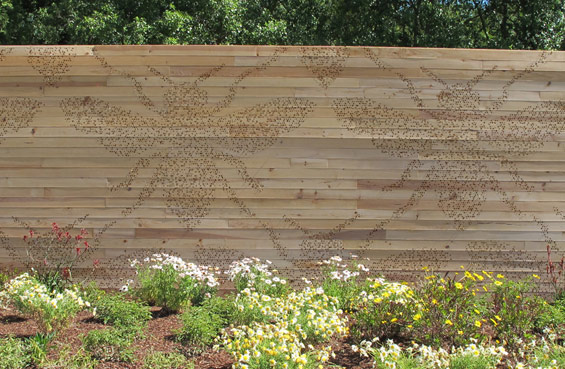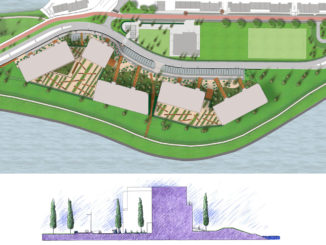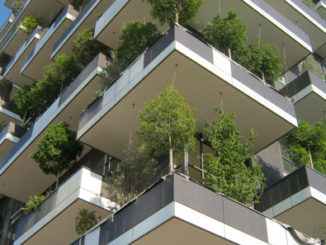Gardens express and represent landscape in our urban environment. Typology, form and function are important components of garden design. Whether minimal, classical, informal, or productive, gardens inherently represent the relationship between man and nature. As we learn more about biophysical systems and ecological processes we are continuously challenged to revisit this relationship. In the project BEEhaviour, the garden becomes both an image and a system, providing a vehicle for education, productivity, exploration and imagination.
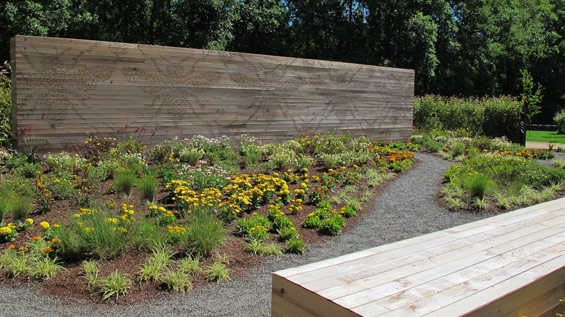
According to prominent research, bees pollinate nearly 90% of our commercial plants, including most fruits, vegetables and nuts. However, industrialized agriculture and rampant urbanization have led to severe bee colony collapses across North America. BEEhaviour provides a platform to communicate the important role of bees in our existence. Black granite-gravel pathways meander though subtle topographic mounds planted with a mixture of yellow wildflowers, providing a visually striking pattern and unique experience. Semi-enclosed by a wooden wall on one side and a long bench on the opposite side, strong geometry is used to frame the garden and to contrast the lush plantings. The perforated pattern in the wooden wall provides nesting opportunities for solitary bees in the Megachilidae family. The benefit of using these bees is that they don’t sting and usually forage within 500 yards from their nest, serving as pollinators for the entire festival grounds. Purposefully designed, BEEhaviour becomes an interactive display of processes, flows and systems that are integral to the sustained growth of our urban ecologies.
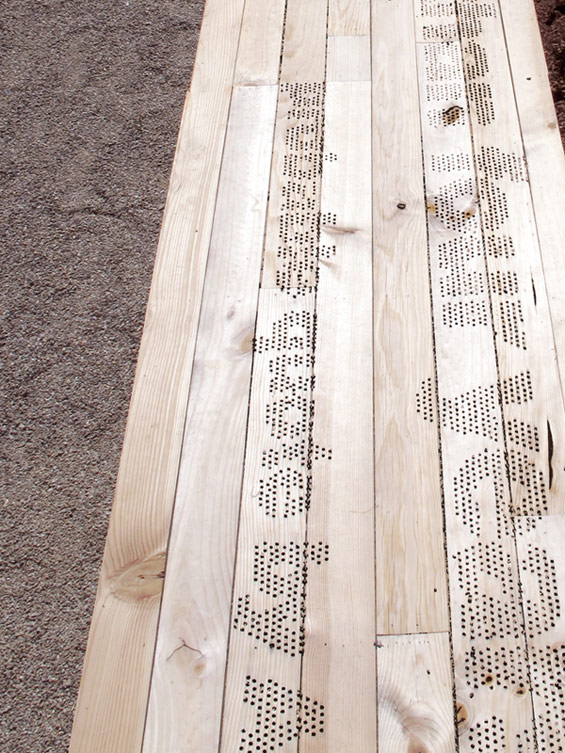
Allariz Spain, selected design, Festival Internacional de Xardíns de Allariz, i.c.w. Kees Lokman, 2013
Selected for the Dutch Yearbook of landscape architecture and urban design, realised in 2013-2014
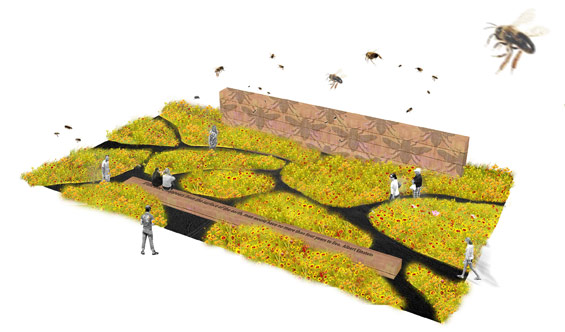
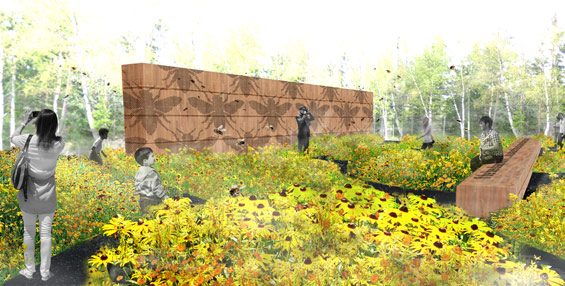
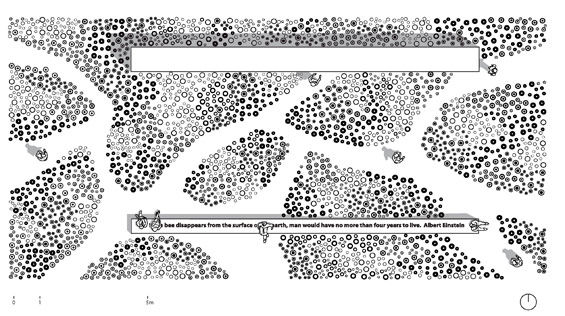
Text & Image Credit | LINT

